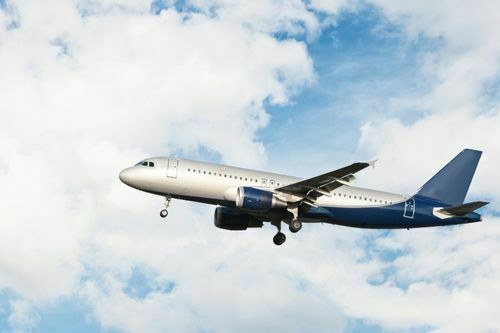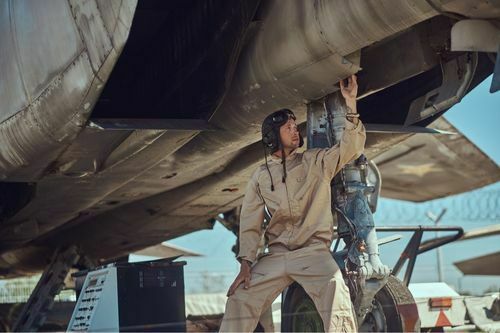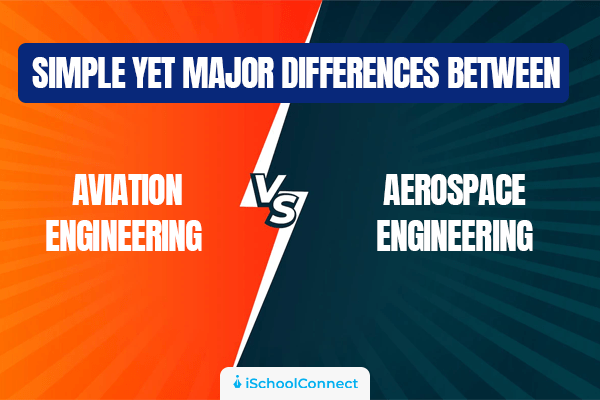Table of Contents
In many ways, aviation and aerospace engineering are similar fields. Both are specific to the aerospace industry, and it’s about flight. However, there are two fundamental branches of aerospace engineering: aeronautical and astronautical. Aeronautical engineers focus on commercial planes that people fly in, while astronautical engineers focus more on unmanned space probes and satellites. Let’s know the difference between aviation and aerospace engineering
What is aviation?

The term ‘aviation’ refers to a variety of pursuits involving aircraft and mechanical flight. The Latin word ‘avis,’ which means ‘bird,’ is where the word ‘aviation’ originates. Everything involving aircraft in the Earth’s atmosphere is referred to as aviation. Aviation is the general term for the use of aircraft for either/both commercial and/or military purposes.
A significant and intricate sector of our global economy is aviation. The Wright brothers achieved powered and controlled flight for the first time in 1903 when they successfully flew their flyer a distance of about 37 meters.
The establishment of the international aviation industry came with the signing of the Paris Convention in 1919.
What is aerospace?
Aeronautics and space travel are the two words that gave rise to the term aerospace. Aerospace is the engineering and science of flying in Earth’s atmosphere and outer space. It is a technological crown jewel that integrates a lot of the most cutting-edge engineering and scientific knowledge available today.
Perhaps the pinnacle of technological icons for our civilization are aircraft and spacecraft. Since they were able to imagine other planets, humans have fantasized about flying and exploring space. That was made possible by aerospace engineering, making those fantasies a reality.
Aerospace is a diverse field covering two main areas: aeronautical and astronautical engineering. In practical terms, the aerospace industry deals with designing, manufacturing, and maintaining aircraft or spacecraft. It also includes a wide variety of other services, such as maintenance, repair, and overhaul of aircraft and satellite services for the space sector.
Differences between Aerospace and Aviation
| Basic |
| Aviation | Aerospace |
| Aviation refers to the flying or controlling of an aircraft. Avis, which means ‘bird’ in Latin, is where the word Aviation originates. Everything involving aircraft in the Earth’s atmosphere is Aviation. | Aerospace refers to the engineering and science of flying in Earth’s atmosphere and outer space. It is the area of technology and business that deals with space travel. In actuality, the words aeronautics and spaceflight are responsible for the name aerospace. It is the area of space that includes the Earth’s atmosphere and the universe beyond. |
| Industry |
| The aviation sector of our global economy is sizable and intricate. It covers all aspects of aircraft in the atmosphere of the earth. Airlines, airports, aircraft, and institutions comprise the sector’s four main subgroups. | Aerospace is devoted to developing, manufacturing, and upkeep aircraft and spacecraft. Along with a wide range of other services, it also includes the space sector’s satellite services and maintenance, repair, and overhaul of aircraft. |
| Discipline |
| In contrast to aerospace engineering, where aviation engineers must concentrate on essential topics like aircraft operation and maintenance, commercial or military aircraft design, and air traffic management, aviation engineers must pay close attention to these areas. | Aerospace engineers need a basic understanding of a few key fields, including aerodynamics, which is the study of how air flows around objects; propulsion, which is the study of the engines and fuels used to propel the aircraft; and material and structure, which is concerned with the construction and design of the aircraft. Thermodynamics, electronics, control systems, materials science, and avionics are additional essential fields of study in aerospace. Teams of engineers and technicians from these fields frequently work in the aerospace industry. |
| Career |
| Professionals in the aviation industry include aerospace engineers, airline pilots, air traffic controllers, aviation safety inspectors, flight attendants, aircraft equipment mechanics, and others. | Professionals in the aerospace industry design, construct, and test aircraft, spacecraft, and associated systems. Commercial jetliners, cargo planes, passenger jets, space stations, and satellites are just a few examples of these aircraft. Aerospace engineers collaborate with experts in the field to construct aircraft, spacecraft, and their parts. Aerospace engineers also conduct research, create design specifications, look into aircraft mishaps, participate in flight-test programs, and perform maintenance and repairs, among other things. |
Both aviation engineering and aerospace engineering are similar in some ways but quite different in others.

Aerospace and aviation engineers have the same goal: designing, building, and testing aircraft. Both engineering fields require you to learn about aerodynamics and how an aircraft works to design a new model that flies efficiently.
When it comes to missiles, both aerospace engineers and Aviation engineers are involved in the development of these weapons. The main difference between the two is that aerospace engineers work on missiles that can travel long distances (such as intercontinental ballistic missiles). In contrast, Aviation engineers work on smaller weapons like rockets used by armed forces or other military applications such as drones.
Key takeaways
- Aerospace is the engineering and science of flying in Earth’s atmosphere and outer space. The term “aviation” describes a variety of tasks related to aircraft manufacturing and mechanical flight.
- While Aviation is concerned with the overall Aviation industry and institutions, Aerospace focuses on aircraft research, design, production, and maintenance.
- Critical disciplines in Aerospace include avionics, thermodynamics, control and propulsion systems, electronics, and aerodynamics. The design of commercial or military aircraft, air traffic control, and operation and maintenance are all significant facets of aviation.
We hope you enjoyed reading this blog! If so, please share your views in the comments below. Click here to reach out to us for more information. We would be happy to assist you with your queries.
Liked this blog? Read next: The first Indian woman in space – Kalpana Chawla
FAQs
Q1. Are Aviation and Aeronautical the same?
Answer – Although the terms’ aeronautics’ and ‘aviation”‘ are occasionally used synonymously, ‘aeronautics’ technically includes ballistic vehicles and lighter-than-air craft like airships while ‘aviation’ does not.
Q2. Which is better, an aerospace engineer or a pilot?
Answer – It depends on your desire and passions as both are preferred career choices. If you enjoy working with aircraft, are interested in learning how they operate and want to build one, aerospace engineering is the field for you. If you have a strong desire to fly, are in good physical and mental health, and can think clearly under pressure, you might consider becoming a pilot.
Q3. Which country is the top in Aviation engineering?
Answer – The United States is the country most recommended for studying Aviation engineering, with about one-third of universities in that field.






